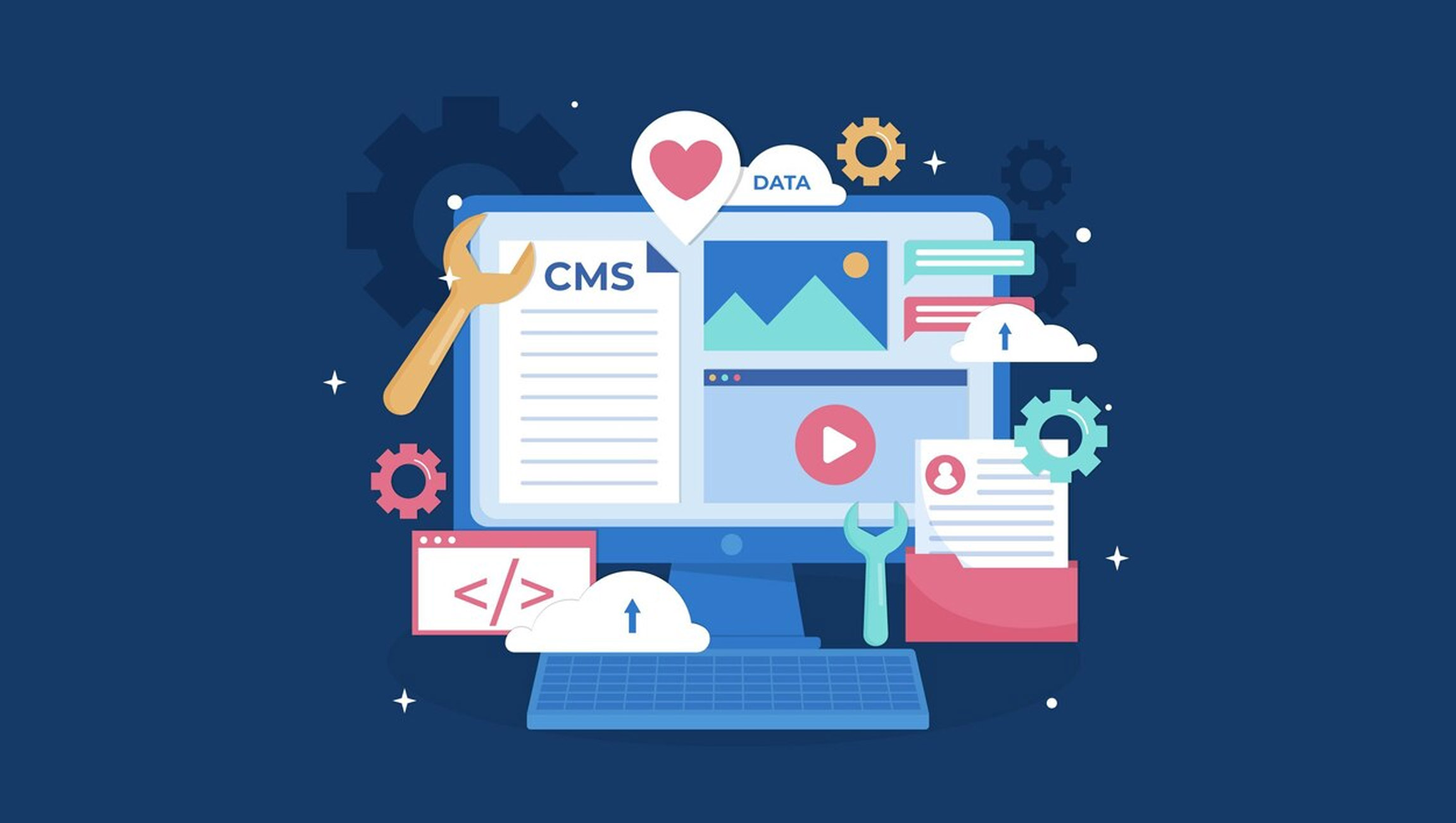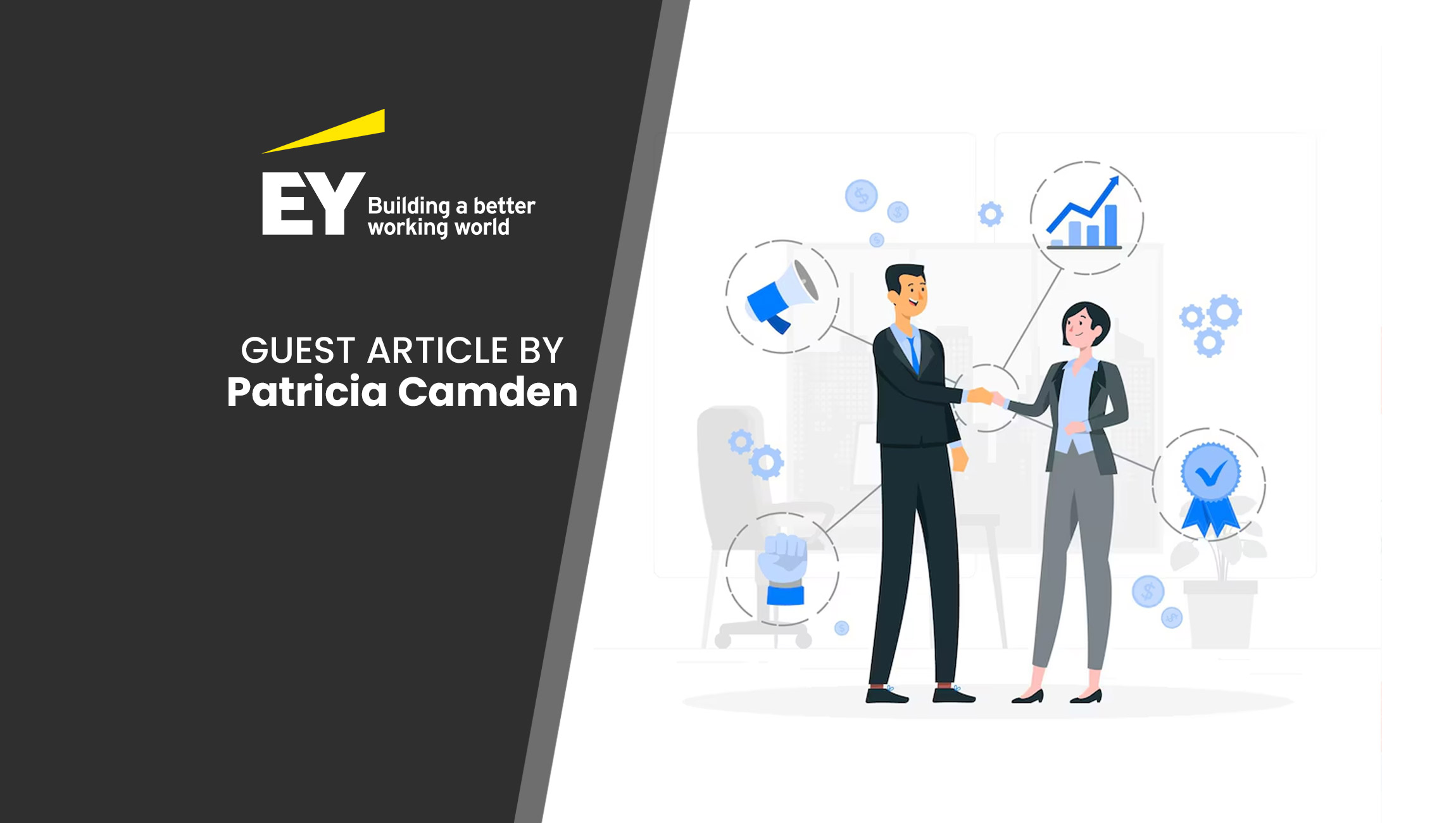If you’re professionally engaged in the technology sector or website administration, it’s customary to be acquainted with the colloquial acronym CMS, denoting Content Management Systems. CMS eliminated the technical nightmare of coding so that non-techies could easily edit and develop their website.
Unlike traditional CMS platforms that bundle content management with front-end presentation, a headless CMS operates as a back-end system solely focused on content creation, storage, and delivery. It acts as a central hub for your content, providing APIs (application programming interfaces) that allow developers to access and utilize that content on any front-end platform.
In delving into the nuances of the headless CMS approach within modern marketing, it’s essential to shed light on the traditional CMS from both conceptual and technical perspectives. The conventional CMS provides management over both the frontend and backend realms of a website. Within this framework, all content data, including text, product details, and images, is housed in the backend. Moreover, it oversees the presentation layer, or frontend, where a close integration between the frontend and backend is established.
In contrast, a headless CMS solely manages the content data or backend without focusing on the frontend, hence earning its name, ‘Headless CMS.’ It is used for editing and storing the content, but it is not responsible for how it is presented on the website visually. The front-end developers are thus given the flexibility to work on any framework that they want.
Once the content is created in the backend, it is ready to be published on the website. The new front-end layer requests the content through an application programming interface, also known as an API. The content delivery display is completely formatted. Here, the front end and back end are loosely connected via API. Choosing the correct CMS depends on the website’s architecture, team, mission, and goals.
Birth of Headless CMS
In today’s business landscape, content reigns supreme, underscoring the importance of headless CMS in optimizing content efficiency and deliverability. With digital media pervading every aspect of modern life, the imperative arises to disseminate content wherever audiences engage with it. This necessitates a level of agility that traditional CMS platforms often struggle to provide. Given the dynamic nature of content creation and presentation, it becomes apparent that content must remain as independent as possible.
Enter the disruptive force of headless CMS technology. By leveraging the power of APIs, headless CMS eliminates the need for cumbersome workarounds and technical hiccups. This enables seamless delivery of the right content to the right user at the right time, thereby continuously maximizing value without constraints.
The Evolution of Website Development with Headless CMS
Unmatched Flexibility and Customization:
- No More Template Limitations: Unlike traditional CMS with pre-built themes, headless CMS empowers developers to build custom websites using any front-end technology (React, Angular, Vue.js, etc.). This translates to unique user interfaces (UIs) that perfectly reflect your brand identity and cater to specific user needs.
- Freedom of Choice: Developers are no longer confined to a single technology stack. They can choose the best tools for the job, ensuring optimal performance and a seamless user experience.
Omni-channel Content Delivery:
- Content Beyond Websites: Headless CMS isn’t just for websites. Content can be delivered seamlessly across various platforms, like mobile apps, digital signage, smart TVs, and even voice assistants. This fosters a consistent brand experience for your audience, no matter how they interact with your content.
- Future-Proofing Content Strategy: Content is separated from presentation, allowing it to be easily adapted for future technologies like AR/VR experiences or voice-based interfaces.
Enhanced Performance and Scalability:
- Faster Loading Times: By separating content management from front-end rendering, headless CMS contributes to faster website loading times. APIs are lightweight and deliver content efficiently, leading to a smoother user experience.
- Independent Scaling: Headless architecture allows for independent scaling of the content management system and the front-end application. This flexibility is crucial for handling traffic spikes and ensuring robust content security.
Focus on User Experience (UX):
- Prioritizing User Needs: With greater control over the front-end, developers can design intuitive interfaces tailored to user needs and expectations. This can lead to higher engagement and improved conversion rates.
- Personalization Potential: Headless CMS integrates well with personalization tools, allowing you to deliver content that resonates with individual users based on their preferences and behavior.
Marketing Technology News: MarTech Interview with Seema Kumar, CMO at Expel
Where to use Headless CMS
Although using headless CMS is a powerful approach, it cannot be used for a one-size-fits-all size fits all. Here are some of the ideal use cases for headless CMS:
Websites that require unique user experiences:
When a website requires a custom design and functionality that goes beyond pre-built templates, headless CMS empowers developers to build a truly unique user experience. This is ideal for e-commerce stores, brand websites, and landing pages with specific conversion goals.
Omni-channel content delivery
If your business needs to deliver content across multiple platforms like mobile apps, digital signage, smart TVs, voice assistants, etc., then headless CMS allows for centralized content management and seamless distribution through APIs.
To future-proof the technologies:
Headless CMS is designed to be highly adaptable to future technologies and emerging trends in the digital landscape. This adaptability ensures that your website remains at the forefront of innovation, constantly evolving to meet the changing needs and expectations of your audience. By decoupling the backend content management from the frontend presentation layer, headless CMS allows for greater flexibility in integrating new features, functionalities, and technologies as they emerge.
To integrate with multiple technologies:
Headless CMS excels in its ability to seamlessly integrate with a wide array of front-end frameworks and back-end systems. This versatility makes it particularly well-suited for handling complex projects that necessitate a diverse technology stack. Whether you’re utilizing popular front-end frameworks or implementing back-end systems, headless CMS provides the flexibility and compatibility needed to harmonize these components effectively.
Large and Scalable Websites:
Headless architecture allows for independent scaling of the content management system and the front-end application. This is beneficial for websites experiencing high traffic volumes or anticipating significant growth.
Popular headless CMS providers:
Contentful
Contentful is a leading headless CMS provider that offers a user-friendly interface and a wide range of features, making it a good choice for businesses of all sizes. It has a robust API that allows for easy integration with any front-end framework or application. Contentful also offers a variety of paid plans to suit your needs.
Kontent.ai
Kontent.ai is another popular headless CMS provider that offers a powerful and scalable platform. It is known for its strong focus on content governance and workflows, making it a good choice for businesses with complex content needs. Kontent.ai also offers a free plan for small businesses.
Prismic
Prismic is a headless CMS provider that is known for its ease of use and its visual content editing capabilities. It is a good choice for businesses that need to create and manage a lot of rich media content. Prismic also offers a free plan for small businesses.
Butter CMS
Butter CMS is a headless CMS known for its user-friendly interface and focus on developer experience. Butter CMS provides built-in image and audio hosting, eliminating the need for separate hosting solutions for your content assets. It is also known for its speed and performance, which can contribute to faster website loading times.
Strapi
Strapi is an open-source headless CMS that is a good choice for developers who want more control over their content management system. Strapi is highly customizable and can be extended with plugins to add new features.
Agility CMS
Agility CMS is a headless CMS provider that is known for its speed and performance. It is a good choice for businesses that need a fast and reliable platform for their website or application. Agility CMS offers a free plan for small businesses.
Cockpit
It is an open-source headless CMS solution that stores and distributes content, making it a pure-breed headless CMS. It is often described as a content provider rather than a site builder. This solution is the perfect fit for those who need to cater to multiple devices. Its intuitive design and user experience enhance content presentation and consumption, providing a more personalized experience for users.
How to choose the right headless CMS?
Once you figure out what a headless CMS is, the next significant step is to find out which platform would suit you the best. As said already, it comes with a lot of realistic and rational approaches and cannot be used just for its own sake. So ask yourself these questions:
- How flexible is the system for my needs? Do I need and can I add rich media content to my website?
- Is it user-friendly and technically less inclined?
- What about data safeguarding?
- How much resource upgrading is needed?
Above all these, feel free to upgrade the resources, needs, and whatever you can if you really want to avail yourself of the system. Demonstrations offer invaluable assistance by allowing you to engage directly with the system, gaining first-hand experience of its compatibility with your organization’s requirements. Similarly, free trials extend this opportunity, providing ample time to explore and experiment with the platform’s capabilities.
Conclusion:
Headless CMS empowers developers to craft unique and engaging websites that deliver exceptional user experiences. Its flexibility, performance benefits, and future-proofing capabilities make it a compelling solution for modern web development. As the demand for omni-channel content delivery and unique user experiences continues to grow, headless CMS is poised to become the cornerstone of website development for years to come.
Marketing Technology News: Understanding the Significance of Data Clean Rooms in Modern Business Operations











